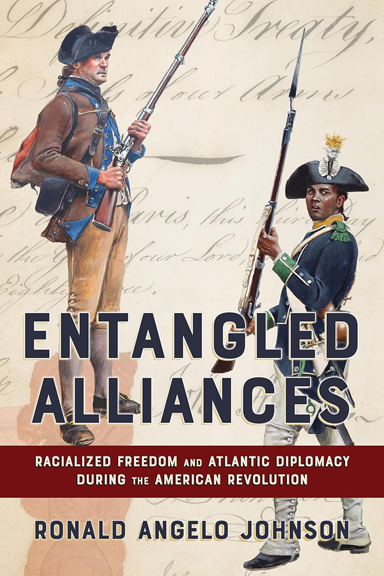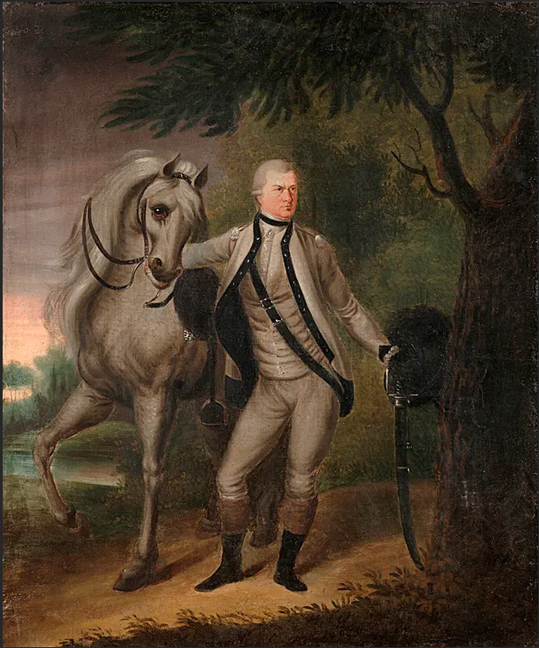Revolutionary Brothers: Thomas Jefferson, the Marquis de Lafayette, and the Friendship That Helped Forge Two Nations by Tom Chaffin (New York: St. Martin’s Press, 2019)
There are countless streets, monuments, and other features in the United States named for the Marquis de Lafayette. However, despite this prevalence of tributes, Tom Chaffin asserts that most Americans know little of the man and his Revolutionary exploits outside of the limited information presented in the classroom. Thomas Jefferson is likely far more familiar, although many popular histories leave his role in the Revolution after penning the Declaration of Independence somewhat obscured. In Revolutionary Brothers: Thomas Jefferson, the Marquis de Lafayette, and the Friendship that Helped Forge Two Nations, Chaffin offers a dual biography that seeks to provide the details of both the better and lesser known exploits of Jefferson and Lafayette and asserts that the two men shared a friendship that influenced the revolutions of their respective native countries.
From the outset, the title of the book is misleading. While Lafayette dedicated years of service to America’s Revolution, he never actually met Thomas Jefferson until 1781. As a matter of fact, as Chaffin shows, even the first meeting is somewhat speculative—the first documented time that the two men occupied the same space was when they attended the Virginia Council of State in 1781, but there is no record of them personally meeting. If Chaffin either focused the book more narrowly on building a case for Lafayette’s role in the Revolution or, alternately, examined Jefferson and Lafayette’s friendship minus the assertion that the friendship itself influenced America’s Revolution, it may have been more palatable than the titular argument that the men’s friendship helped forge America. In reality, the two men had no known contact for most of the Revolutionary War years.
Given that Jefferson and Lafayette do not have a documented friendship up until this point, a large portion of the book reads somewhat choppily, with many short chapters that switch rapidly between the two men. While the structure can be a bit abrupt, the content itself is generally written in an enjoyable narrative style, albeit with the occasional awkward sentence or turn of phrase. Most of the Jefferson narrative contains information that is well known. Serious students of the Revolution may find the Lafayette material familiar, but more casual buffs or general readers will likely glean some new things.
Given the title of the book, readers may be surprised how many pages it takes to reach the protagonists’ first meeting. The long-awaited description of their first meeting is largely speculative as there exists little evidence for how the two men may have interacted, although Chaffin does display some deftness in using the limited sources available to deduce possible scenarios. Chaffin attempts to pinpoint the date of their first meeting in 1781 using evidence provided by letters to suggest that the two had personal meetings. However, the extent of their relationship and face to face contact remains largely uncertain. Documentation of their presence at the May 8, 1781 meeting in Richmond at Virginia’s Council of State includes no evidence of any interactions they may have had with each other.
The second half of the book, which deals largely with Jefferson’s work in France and Lafayette’s role in the French Revolution, fits the title’s descriptor of being an account of their friendship. Chaffin details several times in Paris that the two men gathered together as well as their somewhat extensive correspondence. Trying to further flesh out Jefferson’s and Lafayette’s relationship, Chaffin acknowledges that prior to Lafayette’s return to Paris—by which time Jefferson was living in the city —the two men did not spend much time together. Chaffin’s analysis of their relationship is dependent upon their correspondence, which he uses to argue that Lafayette knew Jefferson well enough to invite him to his home (page 3). While the two men may well have been familiar with each other through their letters and potential time spent together in person, this line of reasoning is not entirely convincing as proof of their relationship at this point. This is, however, the meatiest part of the book: residing in the same city, Jefferson and Lafayette had more opportunities to meet and, with the advent of France’s Revolution on the heels of America’s own revolution, much to discuss. Readers less familiar with the French Revolution or whose knowledge of these events is limited to what the American politicians residing abroad said or did may appreciate gaining perspective on France’s Revolution through the life of Lafayette.
Perhaps some of the biggest takeaways from the book revolve around the comparisons of America and France, their revolutions, and how Jefferson and Lafayette are remembered in the national imagination. As Chaffin notes, America’s enamored view of Lafayette contrasts to France’s own relative dismissal of him, illustrated by the removal of a bronze Lafayette statue in the Louvre’s courtyard in the 1980s (p. 3). Interestingly, while Lafayette is regarded as a hero of the American Revolution, he later expressed regret over participating in a revolution for a country that perpetuated the institution of slavery. Overall, while the book’s title is misleading, Chaffin does offer some interesting observations and assertions. The book is certainly accessible and for those who are less familiar with the lives of Jefferson and Lafayette it is a suitable launch into the worlds of these men.
PURCHASE THIS BOOK FROM AMAZON
(As an Amazon Associate, JAR earns from qualifying purchases. This helps toward providing our content free of charge.)








One thought on “Revolutionary Brothers: Thomas Jefferson, the Marquis de Lafayette, and the Friendship That Helped Forge Two Nations”
Kelly, excellent review!
Intrigued by the prospect of learning new materials demonstrating a deep Lafayette/Jefferson connection, I came away with the conclusion that not only did the two revolutionary leaders significantly differ politically, their relationship is better characterized as respectful and professional, not friendship based. In stark contrast is the palpably close friendship between Lafayette and Washington.
Readers seeking an overview comparing and contrasting the revolutionary lives of the Chaffin’s protagonists will enjoy this engaging book. However, those looking for new relationship insights and how Lafayette and Jefferson influenced each other’s views and actions will be left wanting.